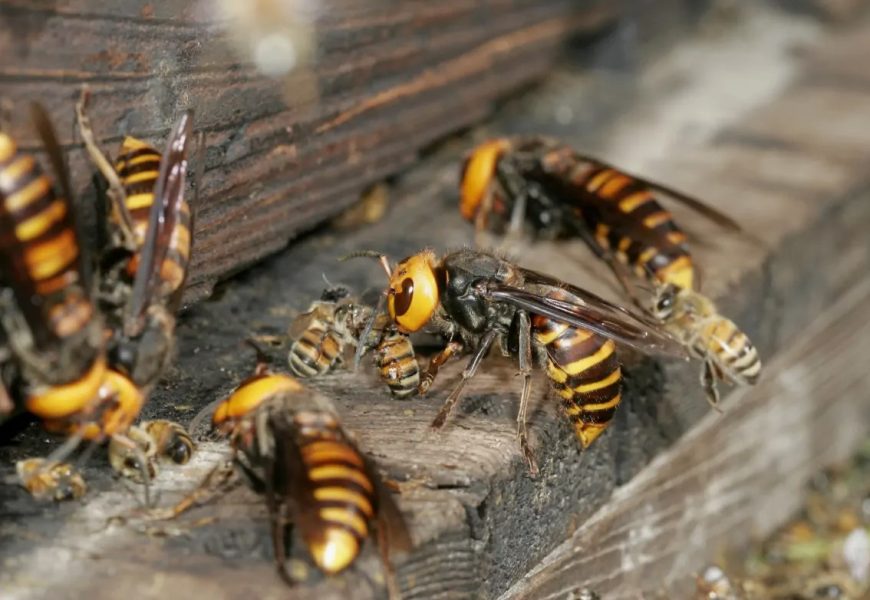As the seasons transition and autumn sets in, many people observe a significant increase in aggression among wasps, hornets, and bees. This behavior, often referred to as Autumn’s Sting, can be particularly unsettling for individuals who enjoy outdoor activities during this beautiful and crisp time of year. The changing temperatures and dwindling food sources contribute to this heightened aggression, making these insects more likely to defend their nests. Understanding the underlying causes of this behavior is essential for navigating our interactions with them safely. By educating ourselves about these seasonal changes, we can enjoy the outdoors with greater awareness and caution.
The Life Cycle of Social Wasps and Bees
To comprehend why Autumn’s Sting occurs, it’s essential to examine the life cycles of social wasps and bees. These insects operate within a colony structure, where roles are defined from the queen to workers. Throughout the summer months, colonies thrive, gathering food and expanding their populations. However, as the days grow shorter and temperatures begin to drop in autumn, a significant change takes place.
In late summer and early autumn, many colonies begin to focus on reproduction. Queens will start laying eggs, which develop into new wasps or bees. As a result, the worker population shifts from gathering food for the colony to protecting it. This transition is pivotal; as the demand for resources increases, so does the competition. Consequently, the potential for aggressive behavior rises.
Resource Scarcity
One of the primary triggers for Autumn’s Sting is the scarcity of food resources. As temperatures drop and the availability of flowers diminishes, wasps, hornets, and bees find it increasingly difficult to locate sustenance. This resource shortage can lead to heightened competition among these insects, making them more prone to aggressive behavior.
When insects are starving, they become desperate. They may invade human spaces in search of food, leading to encounters that can result in stings. Many people unknowingly provoke these insects by leaving out food or drinks outdoors, attracting them and escalating confrontations.
The Aggressive Defense of the Nest
As autumn approaches, colonies of wasps and hornets become particularly protective of their nests. This behavior is driven by the instinct to safeguard their queen and newly laid eggs. A colony on high alert can be much more aggressive than during earlier summer months.
During Autumn’s Sting, any perceived threat to the nest can provoke a defensive response. Simple actions like walking too close to a nest or swatting at an insect can result in multiple stings, as these insects often defend their home in numbers. It’s crucial to respect their space during this time and avoid provoking them.
Environmental Changes and Their Impact
The environmental shifts that accompany autumn can also influence insect behavior. Cooler temperatures can cause stress among wasps and bees, making them less tolerant of disturbances. Windy days and cloudy weather may add to their agitation, resulting in increased encounters with humans.
Additionally, the shorter daylight hours signal the end of the reproductive season, prompting wasps and hornets to become more aggressive as they seek to ensure the survival of their colonies. These environmental factors combine to create an atmosphere ripe for encounters, leading to Autumn’s Sting.
Bee Aggression: Different Species, Different Behaviors
Not all stinging insects react the same way in autumn. While wasps and hornets exhibit marked increases in aggression, bees—specifically honeybees—tend to be less aggressive during this season. Honeybees focus on collecting nectar and pollen for their hives and are less likely to sting unless their hive is threatened.
However, it’s essential to remain cautious around all stinging insects. Bumblebees can also become more defensive as their colonies prepare for winter. Understanding the different behaviors of various species can aid in identifying which insects may pose a greater risk during Autumn’s Sting.
Safety Measures for Outdoor Activities
To minimize the risk of unpleasant encounters with aggressive insects during autumn, there are several safety measures you can take. First, it’s essential to avoid wearing bright colors and floral patterns, which may attract wasps and bees. Instead, opt for neutral or muted tones.
When dining outdoors, keep food and beverages covered, as open containers can lure these insects. If you encounter a wasp or hornet, try to remain calm and avoid swatting at it. Instead, slowly back away from the area, allowing the insect to leave without feeling threatened.
If you find yourself dealing with an increased presence of aggressive wasps or hornets around your home, it may be necessary to seek professional help. Engaging a bee removal service Orange County can ensure that any nests are safely and humanely removed, reducing the risk of stings for you and your family.
The Role of Weather in Aggression
As the weather changes, so does the behavior of these insects. Colder temperatures can lead to increased aggression as they become more desperate to defend their nests and resources. Moreover, rainy or windy conditions may cause them to seek shelter in human spaces, increasing the likelihood of encounters.
These weather patterns often coincide with the autumn season, making it a particularly dangerous time for outdoor activities. Understanding how weather affects insect behavior can help individuals prepare for potential encounters during Autumn’s Sting.
Climax
In summary, Autumn’s Sting is a complex phenomenon influenced by several factors, including resource scarcity, environmental changes, and the life cycles of social insects. As wasps and hornets become more aggressive, it’s essential to take precautions when engaging in outdoor activities during this time.
By respecting their space and understanding their behaviors, we can navigate autumn with a greater sense of safety and awareness. Should the need arise, remember thatbee removal companies can provide assistance in managing any unwelcome insect populations around your home. Embracing these safety measures will ensure that your autumn remains enjoyable and sting-free.











